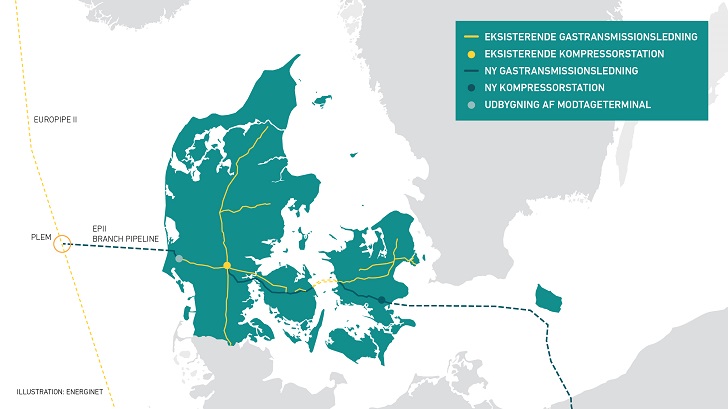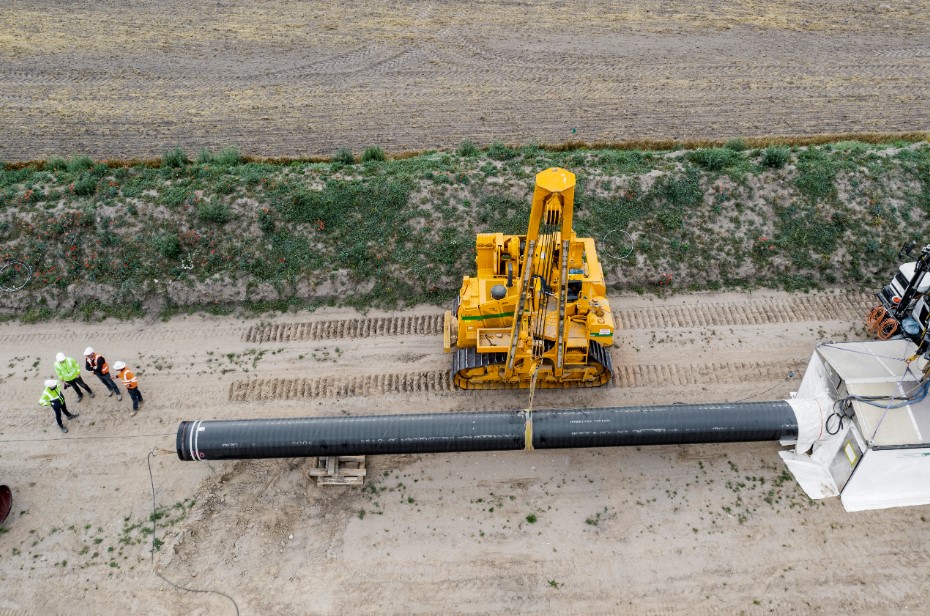
Norway has sent its first gas to the Danish Baltic Pipe terminal, marking a significant milestone in the completion of the pipeline project connecting Norway to Poland. The pipeline opening was scheduled for October 1st but delays to the receiving terminal in Nybro, Denmark had held up the project.
The Baltic Pipe project is a joint venture between Danish energy company Energinet and Polish gas company Gaz-System. The pipeline will transport natural gas from Norway to Poland via Denmark, providing a new direct supply route to deliver gas from the Norwegian North Sea to Poland, which currently relies on supplies from Russia. The pipeline route passes through the Danish offshore gas grid, connecting with an existing pipeline network in Poland.
The pipeline project was launched in part to diversify Poland's supply of natural gas, which has been dominated by Russian gas for decades. Poland has been seeking alternative gas supplies since it accused Russia of using its energy supplies as a political weapon in 2014, when Russia cut off gas exports to Ukraine.
The Baltic Pipe will also open up a new route for the export of Norwegian gas, which has traditionally relied on pipelines to the UK and continental Europe. The pipeline is expected to transport around 10 billion cubic meters of gas annually, providing a reliable and cost-effective supply of gas to Polish consumers and industry.
The Baltic Pipe project is also part of the EU's efforts to strengthen energy security across the region. The EU has been working to diversify its energy supplies and reduce dependence on Russia, which supplies around a third of the EU's natural gas. The EU has set a target to reduce its dependence on Russian gas to below 50% by 2030.

The completion of the Baltic Pipe is a significant achievement following years of planning and construction. The project required the laying of almost 1,000 kilometers of pipeline, including a 275-kilometer section between Norway and Denmark. The pipeline was laid in two main sections, one from the Norwegian North Sea to the Danish landfall at Nybro, and the second from Nybro to the Polish border.
The pipeline was also designed to be environmentally friendly, with the use of high-strength steel and advanced welding techniques to reduce the amount of excavation required. The pipeline route was also chosen to avoid sensitive areas, such as protected nature reserves and archeological sites.
The receiving terminal in Nybro, Denmark was the final piece of infrastructure to be completed before the pipeline was operational. The terminal includes facilities for regulating the gas supply, metering, and odorizing, as well as security and safety systems. The terminal is also equipped with a backup power supply and emergency response equipment to ensure the safe and reliable operation of the pipeline.
The completion of the Baltic Pipe project is a significant achievement in terms of energy security and diversification of gas supplies in the region. It provides a new direct route for the delivery of Norwegian gas to Poland, and a reliable and cost-effective supply of gas for Polish consumers and industry. The project also highlights the importance of international cooperation in achieving the EU's energy goals and strengthening energy security across the region.